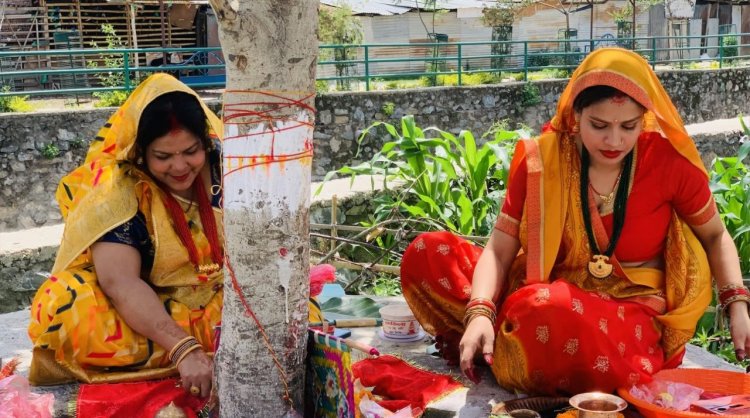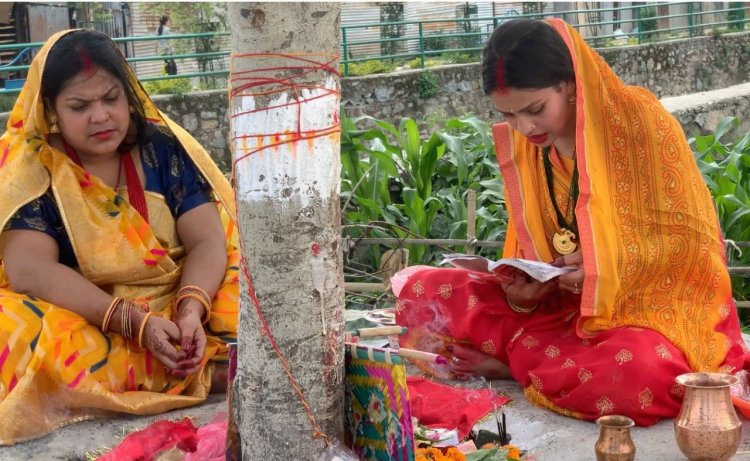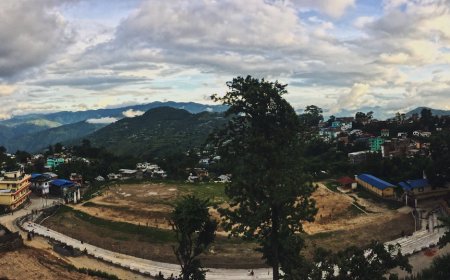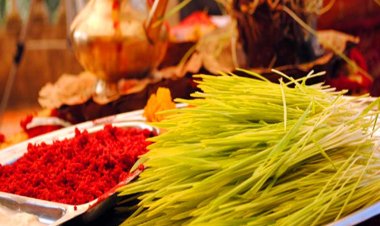Vat Savitri: A Hindu Festival of Devotion and Prosperity
Experience the Hindu Festival of Vat Savitri, where married women in Nepal fast and worship a banyan tree symbolizing deities. Praying for their husbands' well-being, this festival celebrates devotion and prosperity.

In the Terai or Madhesh regions of Nepal, married woman maintain the significant ritual known as Savitri Brata. It occurs on the final day of the lunar Hindu month of Jestha's dark half. Hindu women in Nepal and India hold a fast on this day called as Vat Savitri Puja in order to pray for their husband's health and longevity as well as for everlasting marital love.
The Vat Savitri Vrat honor's Savitri's courage in her battle with Yamraj, the god of death, to bring her husband Satyavan back to life. On this day, women observe a fast and offer prayers to Vat Savitri in hopes of receiving her blessings for their husband's long life and good health.

History
According to a narrative from the Mahabharata epic, Savitri was the daughter of King Ashtapati. She had the option to select her spouse, and on her journey, she met Satyavan, the blind king Dyumatsena's son, who was living as a forest dweller as a result of his father's banishment. Savitri insisted on being married to Satyavan even though she was aware that he only had a year to live. Savitri vowed to fast and keep watch for three days prior to Satyavan's anticipated demise.
On the morning of the predicted day, Satyavan became weak while splitting wood and eventually died, with Savitri by his side. She placed his body under the shade of a Banyan tree. Yama, the god of Death, arrived to claim Satyavan's soul, and Savitri followed him. She offered prayers and praise to Yama, who was impressed by her words and offered her any boon except the life of Satyavan. Savitri asked for her father-in-law's eyesight and kingdom to be restored, a hundred children for her father, and a hundred children for herself and Satyavan. Although the last wish presented a dilemma for Yama, he granted life to Satyavan due to Savitri's unwavering dedication and purity. Satyavan awakened as if from a deep sleep and returned to his parents along with his wife.
How is it celebrated ?
The women of Maithil stay fast on this day and worship the bargad tree (also known as the vat brikshya or banyan tree). People who perform Vat Savitri Puja under Vat Vriksh are said to receive the blessing of Soubhagya, or the extension of their husband's life. On this day, women are elegantly attired; some women observe a fast for three days, and the majority do so at least temporarily. Fruits and clothing are donated to the Brahmins in a bamboo basket when they break their fast. After the rites of worship have been completed in the late afternoon, a woman bows respectfully to her husband and the elderly.
Women gather in groups to listen to the Savitri Katha and worship the banyan (vata) tree. Women offer prayer and worship in this day. Women pray for their husband's health at this puja. The banyan tree is watered by women, who also sprinkle red powder (Kumkum, Simrik, and abir) on it and wrap cotton threads around the tree's trunks before performing the parikrama seven times. The seven cycles of parikrama are thought to bind a husband and wife's bond for seven further lives.
Women adore Savitri Devi during the puja and present Bhog (food offerings) to her with the utmost devotion. Just so you know, this festival is based on the epic legend of Savitri and Satyavan as narrated in the epic Mahabharata.
What's Your Reaction?





































































































